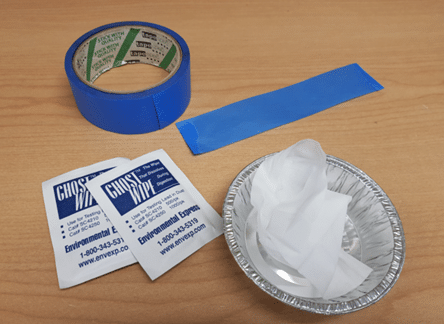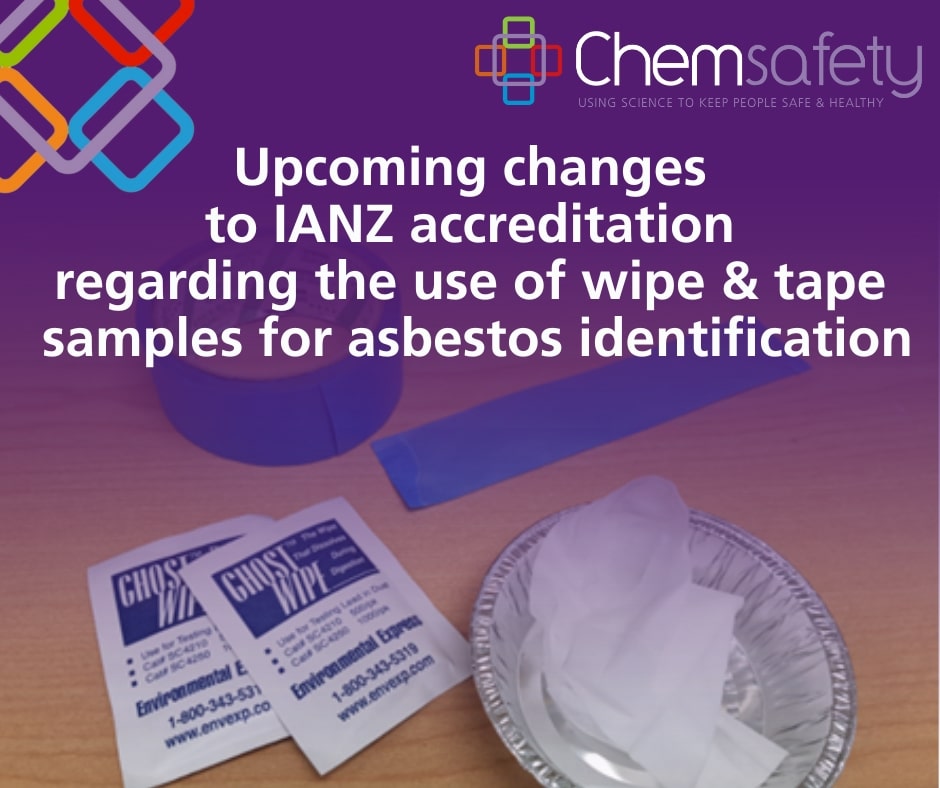In this article written by our Lab Manager Livia Fioravanti, we want to bring to your attention the latest update IANZ has made to their AS LAB C2.3 IB C1.1 Supplementary Criteria Asbestos (surveying, inspection, sampling, testing) and its impact in the process of asbestos testing.
- In their latest update, IANZ have now excluded wipe and tape samples from the bulk sample accreditation. This means that all New Zealand laboratories accredited for the testing of bulk samples, cannot report the results of testing wipe samples and tape lifts under their accreditation (these results will no longer be able to be reported as IANZ accredited/endorsed). Details of IANZ reasons for this exclusion can be found at ‘IANZ Updates’ from March 2024.
Normally wipes (or swabs) and tapes samples are collected to check if a surface (e.g. floor, benches, ventilation ducting, etc) are contaminated with asbestos due to a disturbance or removal of a material containing asbestos. Some contamination can still be assessed by collecting the dust around the area. If a representative quantity (e.g. a tablespoon) of the material is collected, this is not affected by the exclusion of wipe and tape samples from IANZ accreditation, as these are considered dust samples.

Surface testing is a mandatory step during the Class A Clearance Inspection Process, conducted by a Licensed Asbestos Assessor in a Class A asbestos removal work area and undertaken by a Licensed Asbestos Removalist. The Approved Code of Practice (ACOP), Management and Removal of Asbestos, Nov 2016, gives some options on how the surface testing can be conducted, with swabs and tape sampling being one of the options for sample collection and AS4964, using Polarised Light Microscope (PLM), and several Transmission Electron Microscope (TEM) methods for testing. TEM methods are more suitable for analysis of swabs, tapes or filters due to its superior precision and accuracy, but there is low availability of TEMs in New Zealand, due to the high cost of the equipment, and therefore the cost of this analysis is high and turnaround time is much longer.
Despite the surface sampling requirement, the ACOP recommends giving stronger weight to the visual inspection, which involves visually checking if the surfaces are clean and free of dust or debris, and clearance air monitoring results to determine if the asbestos removal area can be reoccupied without representing a risk to the health and safety of the public. The Licensed Asbestos Assessor will normally only collect a surface sample if the area is clean and dust free to assure no asbestos is present, so dust samples are not applicable for these situations. If dust is visible, no surface sample will be collected and they will not issue the clearance certificate until the site has being properly cleaned.
Wipe and tape samples can still be collected and tested, at the discretion of the Licensed Asbestos Assessor and as per the requirement in the Asbestos Regulations for Class A removal work to help with their decision on whether to issue a clearance certificate, but the test report will no longer be IANZ accredited. Some laboratories can decide to reject these types of samples if they wish. At Chemsafety, we have made the decision to continue to analyse swabs (only using ‘ghost wipes’) and adhesive tapes but the results will be reported without IANZ accreditation.

